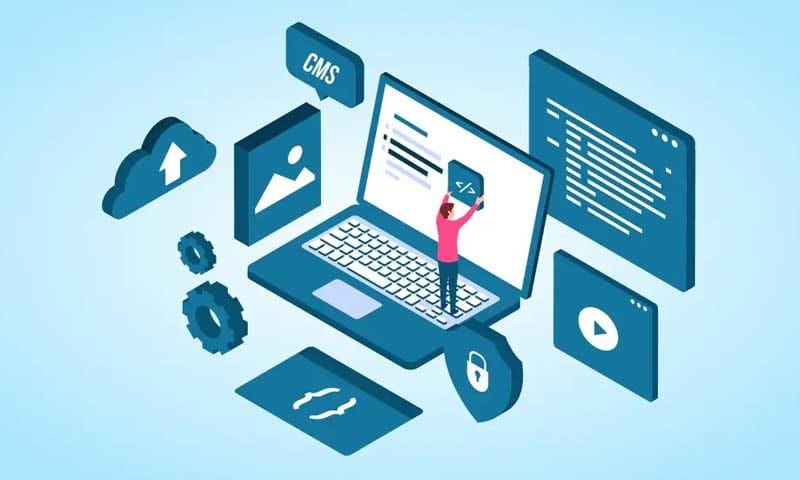Every day, billions of users log into a social media profile of some kind. With this amount of activity, hackers and cybercriminals would be dumb not to take advantage.
If you don’t double-check your social media privacy settings, there’s a lot of information someone can get about you from your page. If a hacker can get their hands on your email or even your birthday, it will open a gateway for them to log into your bank account app or other private accounts.
So, how do you protect yourself?
We’ve got a guide that will show you what social media security settings you should change to make yourself less of a target. Keep reading to learn more.
Common Security Risks
Before we teach you how to change your social network security settings, let’s talk about the security risks you may bump into if you don’t.
Using the default privacy settings will always put you at risk. Abandoning your account can cause problems too. If hackers can see your personal information, you might be vulnerable to phishing emails and malware.
Abandoned Accounts
Let’s say that you don’t get on your social media often. You pop in maybe once a month to see what your friends and family are up to. You may post something, but normally you log out without doing so.
Your account may not be abandoned, but it might as well be. That makes it a target for hackers.
They know that they can take control of your account without you noticing. Once hackers sink their claws in, they’ll send your followers links that are infected with malware. If you own a business, they can post up false rumours that turn people away from your brand.
So, if you want to keep business safe from hackers, you’ll need to keep a constant lookout over your page. Log in once a day.
Default Privacy Settings
When most people make a social media account, they accept the default privacy settings and call it a day.
These settings will do a decent job of protecting your privacy on social media, but they’re not infallible.
For example, most sites are set up to share all your information with people automatically. As we’ve said, that can be dangerous. You may decide instead that you only want your followers to see what you have on your page.
Impostor Accounts
Imposter accounts are social media pages that appear genuine. However, if you take the time to really observe them, you’ll find that they’re fake.
If you interact with them, you’re most likely talking to a hacker who’s trying to grab your information. It can be a huge problem for businesses that delve into influencer marketing.
It’s a common strategy that involves teaming up with a popular social media personality to gain more followers. All the influencer has to do is post a video of them using a business’s product for it to gain traction.
Some of these imposter accounts will pretend to be an influencer. The second the business gives them the necessary information they need to “team up,” the hacker will have all they need to do some damage.
Human Error
We’re only human. It only takes a single click of a mouse to expose yourself to malware. It’s a risk you run every time you follow a link that pops up on your social media dashboard.
The easiest way to prevent yourself from the falling victim is to install antivirus software. It will warn you when you navigate to a malicious site.
If you run a business, one of your employees may post sensitive information that could harm your company. That’s where security training comes in.
Phishing
Phishing scams are a trap that isn’t difficult to fall into. You’ll get an official enough-looking email that will ask for the login credentials for your social media page.
Since you don’t have any reason not to trust the sender, you decide to send the information over. Now the hacker has everything they need to get into your account.
Malware
One of the biggest social media risks is malware. Again, if a hacker manages to get into someone’s account, they can post links to malicious websites. If you were to click on one of those links, you would be in trouble.
Some attacks are more targeted while huge cybercriminal groups tend to go after businesses.
Facebook Security
Now that you know what kind of risks you face, it’s time to learn how you can protect yourself. Again, most of the time, it’s all a matter of playing around with your security settings.
Here are a few things you should change to secure your Facebook page.
Off-Facebook Activity
The thing about Facebook is that it’s always monitoring your activity. The other apps you have on your phone help the platform do it.
There’s a reason why you’re getting ads for certain mobile games while you scroll through your dashboard. Your current mobile game apps are feeding your activity to Facebook.
You can turn off this feature, but be warned, that if you do, you won’t be able to use your social media page to log into your apps anymore.
If you still want to proceed, click the three-line menu at the bottom corner of your Facebook page. Select “Security” and scroll down until you see off-Facebook activity. Click “Clear History” to delete the apps that share your activity.
Hide Your Location
Facebook doesn’t only use your apps to send you targeted ads. It uses your location as well. You may not want hackers to be able to get their hands on that kind of information.
Not sharing your location can be a bit tricky. Even if you turn it off in the app, it can still get the information via your phone.
That means you have to hide your location on both your device and your social media page.
If you have an iPhone, go to your phone’s settings and head to the privacy tab. You should see something called Location Services.
Click on that, followed by “Facebook.” Tap “Never” to cut off the app’s access to your location.
Hiding where you are on an Android device works similarly. You’ll go to the privacy menu in your phone’s settings. Head over to the “Permissions Manager” and click on “Location.”
All you have to do to stop Facebook from accessing your location is to click on the app name and tap “Deny.”
Two-Factor Authentication
If you have two-factor authentication set up, a hacker won’t be able to log into your account without punching in a code. Since this code is sent to your phone, it will be impossible for them to get their hands on it (or at least more difficult).
Go into your Facebook settings menu and click on “Security and Login.” If you scroll down, you’ll see the option to turn on two-factor authentication.
The app will prompt you to type in your phone number so it can send you a code. Type it in to finish the process.
Instagram Security
You’ve got your Facebook account nice and secure, but what about your Instagram? Do you have a two-factor authentication setup? Do you keep tabs on your login activity on a normal basis?
Secure Your Account
If you log in to your Insta using your Facebook account, or even if you don’t, you’ve got a password in place. That’s step one to securing your account, but you can do better.
Instagram has a cool feature that will allow you to check out how secure your account is whenever you want. Go to your profile tab in the app and navigate to your settings. After that, you’ll click on “Security.”
From there, you’ll go to “Security Check-Up.” Not only will Instagram check how secure your account is, but it will give you recommendations that you can use to increase the security of your account. You can also use it to turn on other handy features.
Two-Factor Authentication
Again, if you don’t have two-factor authentication set up, you’re doing something wrong. It does wonders for security because it forces a hacker to put in a code after typing in your password.
The code gets texted to your phone, which makes it difficult for a cybercriminal to get their hands on it.
Go to your settings menu and click on the security tab. Tap two-factor authentication and select “Get Started.”
You’ll have the choice to use Google Authenticator or have a code sent to your phone via text message. From there, it’s all a matter of following the prompts to finish the setup process.
No Third-Party Apps
Depending on how long you’ve had your Instagram account, there’s a chance that you’ve linked your page to several third-party apps. Some of them are harmless.
Others, not so much.
If your account on some of these third-party apps is old, and you’re not using them, they pose a security risk. Get rid of them.
In the Instagram app, head over to your Security settings. Go to Apps and Websites. You’ll see three different lists.
You don’t need to bother with the Expired or Removed ones. What you want to pay attention to is the Active list. Delete the apps that you no longer want to have access to your Insta.
Keep Tabs on Your Login Activity
One of your friends has informed you that they received a suspicious message from you recently. There’s a good chance that your account was compromised. The only way you can find out for sure is to check your login activity.
In the app, go to the Security tab. From there, click on “Login Activity.” It will show you a list of your recent logins.
If you spot one that you don’t recognize, log out of your account right away and change your password.
Twitter Security
The last social media platform we’re going to talk about is Twitter. You may not want everyone and their mom to be able to see your Tweets or for people to find you using your mobile number.
Protected Tweets
Twitter’s default settings allow everyone to see your posts. If you don’t like the sound of that, we’ve got good news. It’s simple for you to change it.
All you have to do is navigate to your settings and click on the “Protect Your Tweets” option. After you confirm, you’ll get an email every time someone attempts to follow you. You’ll then be able to reject or accept the request.
Only your followers will get the chance to see what you post, and no one can retweet your content.
Discoverability Settings
As a default, Twitter will allow potential contacts to find you by using personal information, such as your phone number.
If you don’t want people having access to that kind of information, you can go to security settings and uncheck all the boxes involving discoverability.
Data Sharing
Twitter can personalize your scrolling experience by using your data. If you don’t want the app to know about your browsing habits, you can turn off sharing.
Head over to your social media privacy settings and uncheck the boxes that involve your personal habits.
Stay in Control of Your Social Media Privacy Settings
With all the people that browse through social media every day, there’s no wonder why accounts are such a huge target for hackers. While default social media privacy settings will provide basic security, in most cases, it’s not enough.
If you want to customize your protection, you’ll need to alter your security settings. Keep cybercriminals away from your personal information.
For more tips that will help you manage your social media accounts, visit the Technology section of our blog.









